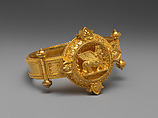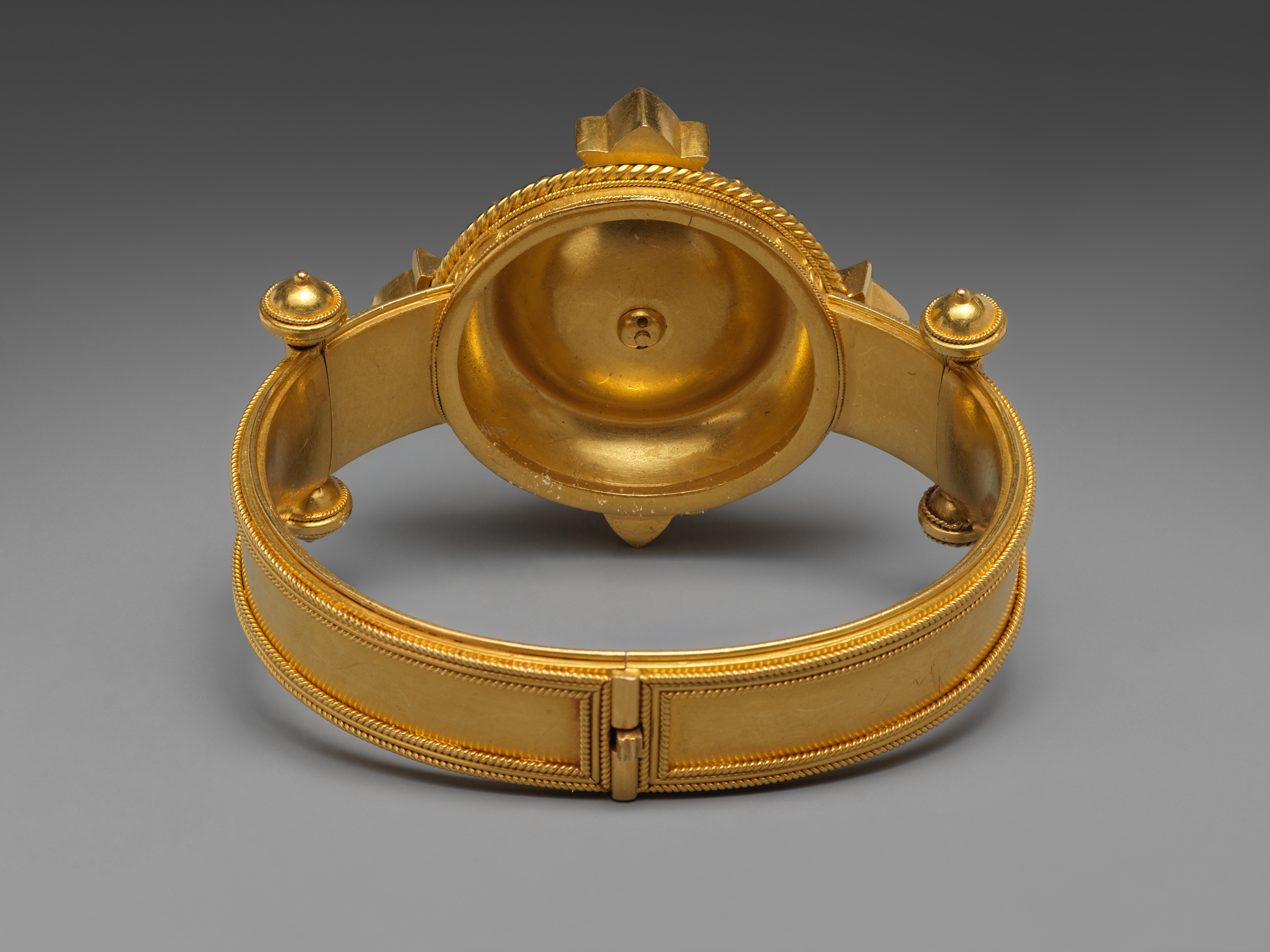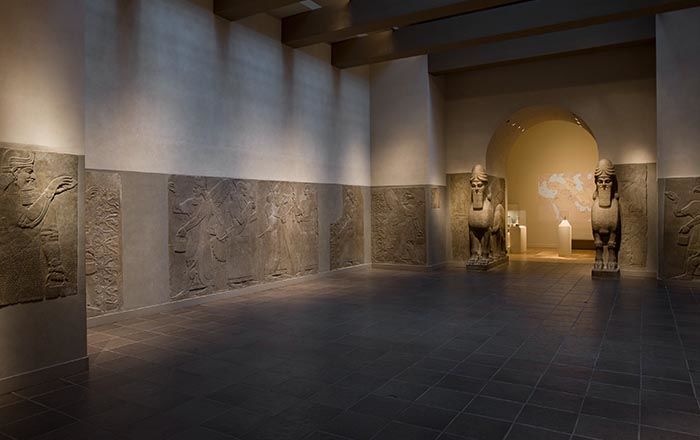Hinged bracelet with Assyrian human-headed winged bull medallion
Not on view
Following the excavation of Assyrian palaces in the mid-nineteenth century, ancient Mesopotamian imagery began to be used in European decorative arts, including jewelry and ceramics. Publicity in the form of news coverage and popular books around the excavations, removal of many sculptures from sites in northern Iraq to England and France, and public spectacles such as the reconstructed ‘Nineveh Court’ in the Crystal Palace at Sydenham, London, fostered a fascination with Assyria and Assyrian art among the Victorian public.
This bracelet, particularly in the design of its central medallion, is very close to those known to be made by Edwin Streeter, a Bond Street jeweler who made and advertised a variety of jewelry based on ancient themes, including ‘Nineveh’ brooches and earrings, and supplied them to other jewelers. Streeter’s settings drew on classical and Etruscan sources to form a generic ‘ancient’ frame into which specific ancient designs such as the Assyrian winged bull could be set.
This image cannot be enlarged, viewed at full screen, or downloaded.
This artwork is meant to be viewed from right to left. Scroll left to view more.



